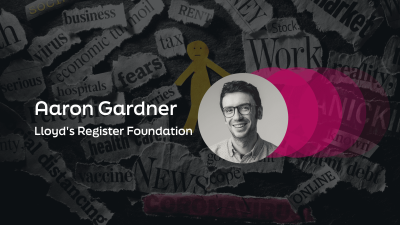
Improving access to redress for workers vulnerable to violence and harassment in South Asia
Experts discuss the factors that make some workers more vulnerable than others to violence and harassment.
This page is approximately a 5 minute read
This page was published on

Dr Aaron Ions Gardner, Senior Data And Insight Scientist
The Lloyd’s Register Foundation World Risk Poll is a hugely valuable resource to understand how women perceive and experience a wide range of risks at the global scale. The 125,000 people interviewed for the 2021 Poll included 66,000 women across 121 counties, including places where little or no official data on these safety issues exists.
We have told some of those global stories across our four themed reports, but in our first demographic snapshot report, we present high level findings based on all 2021 World Risk Poll questions, split by sex, to highlight how women’s’ perception and experience of risk can differ from men’s.
The true power of the Poll is in its demographic width and depth. Using the full dataset it is possible to identify specific groups who may be at elevated risk, allowing for the creation and implementation of highly targeted intervention strategies.
For instance, in our most recent report on violence and harassment in the workplace we highlighted the increased risk for women working outside their country of birth, and their reluctance to tell someone about their experiences compared to their native-born peers.
When the World Risk Poll data is split by sex an overarching theme appears: women are generally more pessimistic in their views about the future and also more worried about the risks they may face.
We can see this in the first of our 2021 Poll reports, in which a quarter (26%) of women told us they feel more safe than they did five years ago, 3 percentage points lower than the figure for men. 36% of women said they feel less safe than they did five years ago, 4 percentage points higher than the figure for men.
That women feel less safe is also reflected in questions about worry and experience of seven specific everyday risks. For all but one of these risks, women are significantly more likely to say they are very worried than men. However, when asked about their actual experience of these risks, the gap was much smaller or non-existent.
For example, 35% of women are very worried about serious harm from violent crime, 7 percentage points higher than men. However, there is no difference in personal experience of such harm.
Similarly, when asked about mental health, 28% of women said they are very worried about serious harm, again 7 percentage points higher than men. However, here there was a slight difference in personal experience, with 9% of women reporting experiencing serious harm due to their mental health, 1 percentage point higher than men.
This heightened concern is reflected in the online world as too. As see in our recent report on data and AI, women are significantly more likely to be very concerned about their personal data being stolen or misused by companies than men.
Alongside worry and experience of risk, the 2021 World Risk Poll also assesses resilience to shocks – at individual, household, community and societal levels. Splitting this data by sex reveals that, at the global level, women report lower resilience than men.
While higher resilience is broadly associated with high income countries, women in these countries who are either in the lowest personal income quintile, have lower levels of education, or are in precarious employment, are often significantly less resilient than their male peers, or even women in lower income countries.
A major contributor to this in our Resilience Index is financial resilience, as assessed by how long people could cover basic needs if they lost all household income. Globally, 13% of women said they would be unable to cover basic needs for more than a week, 2 percentage points more than men. For those who could not cover their needs for more than a month, the gap widens further, at almost half (46%) of women, compared with 42% of men.
One potential explanation for this relative lack of financial resilience could be the differences in women’s work history and current employment status. 14% of women polled stated that they have never worked, 8 percentage points more than men.
Among respondents who have worked, there are significant differences in terms of current employment status. Globally, half (50%) of women who have ever worked describe themselves as currently unemployed or out of the workforce, compared with only 29% of men. Among those who are currently working, women are much more likely than men to be in part-time employment, rather than full-time or self-employed.
It is worth considering whether lower self-reported resilience is a cause or effect of the thread of pessimism and heightened safety concern reported by women in the World Risk Poll. Regardless, it is apparent that at the global level women are more pessimistic about the future and more concerned about the risks they face in life.
It is also clear that a ‘one size fits all’ approach is not appropriate to address these concerns, as there is a complex interplay with many other factors, including income, education, regional variation and societal norms. The 2021 World Risk Poll dataset is therefore an ideal resource to identify specific groups of women for targeted safety interventions.
